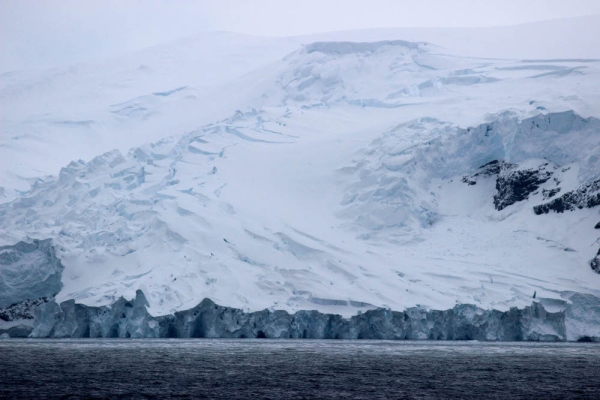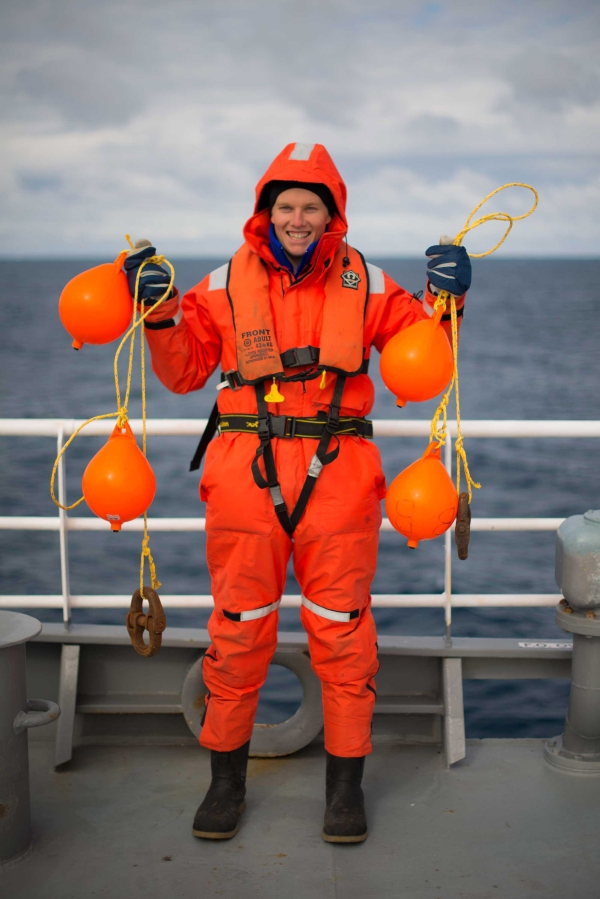We have now said goodbye to the towering cliffs and vast glaciers of the Balleny Islands and have been heading southeast tracking blue whales by following their low frequency calls. Yesterday we broke into the polynya that is the Ross Sea. The fantastic weather is following us - making it easy to appreciate this surreal part of the world.
Over the past week I have had some unbelievable encounters with humpback and blue whales. Watching humpbacks jumping, splashing, and giving us views of their flukes against a backdrop of icebergs is stunning. But my favourite sight so far is seeing the most amazing luminescent turquoise as blue whales swim just under the surface (I am told this is where they get their name), before breaching and loudly exhaling as the plume of spray fills the air.
This part of the voyage is focused on the blue whale survey. Blue whale numbers dropped to just a few hundred in the whaling days and still little is known about the planet’s biggest animal. However it is now estimated that their numbers are recovering slowly into the thousands. The scientists on board are constantly gathering data from their different fields to get a better understanding blue whales in this area.
I have been helping out in all different aspects of the whale work. Finding a blue whale begins in the acoustics lab, by deploying sonobuoys into the ocean about every 60 km. Blue whales have two distinct calls: Z calls are thought to be only produced by males but are of a frequency we can’t hear; and D calls, which sound a bit like a low moo from a cow and are associated with feeding and socialising. The Whales are named to help keep track of them. We are on a superhero theme at the moment so we have had Dangermouse, Batman, Robin and the Joker all producing fascinating calls.
Once the observation team have seen the tall blow and small dorsal fin that confirms a blue whale sighting, video tracking is used to look at the fine-scale movement and behaviour of the whale.
While all this is happening the active acoustics team is looking at the echosounders to see what the whales might be feeding on. To confirm what the echosounders are seeing we have been doing some midwater trawls and have found that Antarctic krill seem to be the whale’s favourite food. Trawling here is always exciting, the crew say it’s like Christmas you never know what you’re going to get!
I have also been involved in the biopsy and identification of the whales. A group of us stand on the bow of the ship as we approach the whale. The biopsy involves shooting a small dart into the whale and my job is to throw buoys to mark the location of biopsy darts once they are in the water so we can easily find and retrieve them, which can be tricky on a 70 m ship. So a small remote-controlled catamaran goes and helps collect the dart. The cold wind and occasional snow makes it a job where I have to wear three pairs of gloves and two balaclavas, but being so close to the whales makes it so worth it!
After two weeks at sea I think I have adapted well. The only thing that keeps me up at night is the ice passing down the side of ship, just a few metres from my bunk. Yet the sound reminds me of where we are and I can’t help but smile.
Blake


